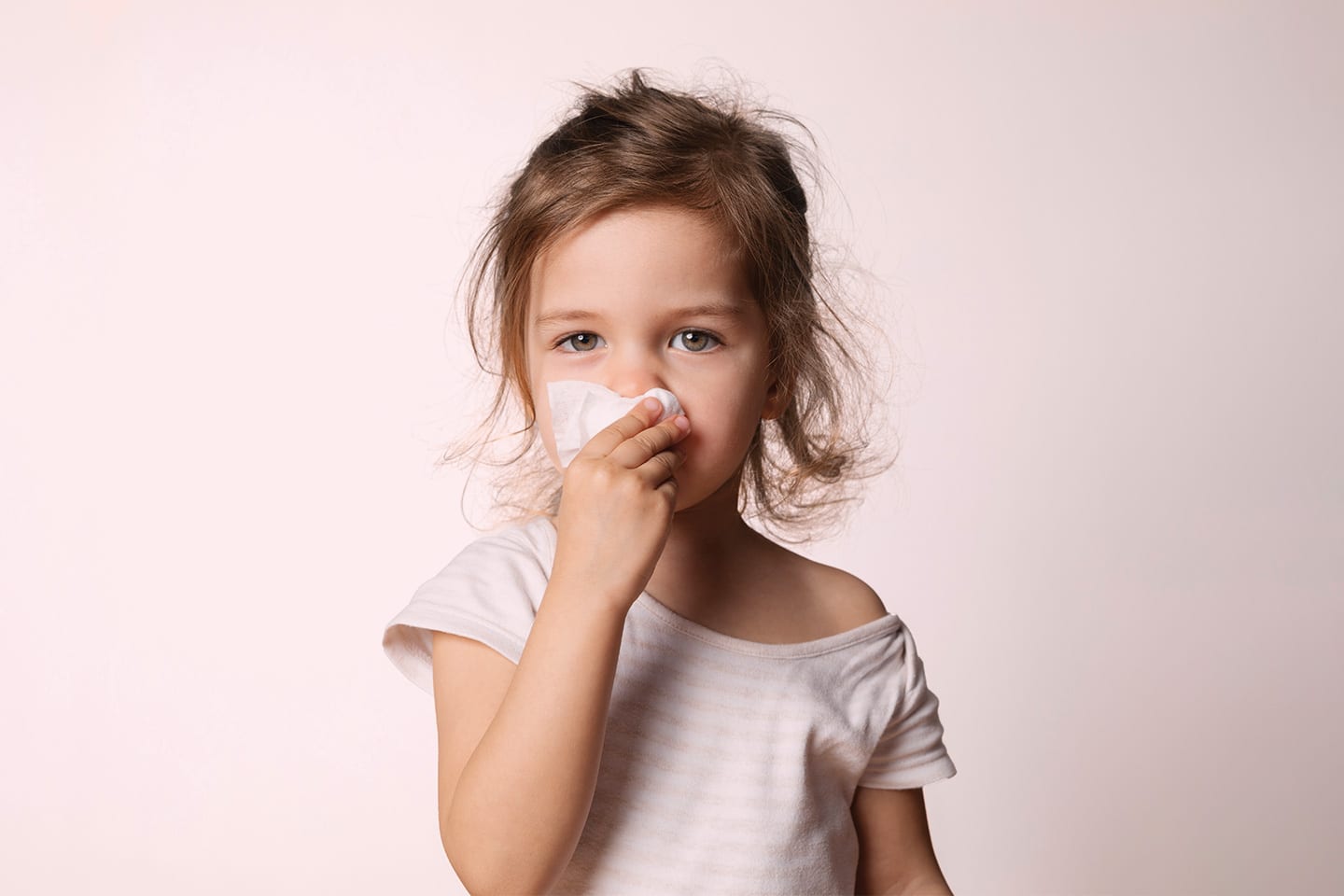What They Are & How to Treat Them
Coughs, runny noses, and stomach bugs are all a rite of passage for small children. These ailments are very common and nearly impossible to avoid entirely; nevertheless, that won’t stop parents from worrying about their sick little ones. For a little peace of mind, read on to learn more about illnesses that young children often come down with and what to do if you think your child has contracted one.
By Anna Hill


Family Medicine Physician, American Family Care of Chattanooga
Why Are Small Children Prone to Certain Illnesses?
It seems that every year, especially during certain seasons, small children are always coming down with some kind of illness – one that is often infectious. This can occur for several different reasons, but one of the biggest factors is that children, especially under the age of 3, haven’t had time to develop robust immune systems quite yet. When a mother is pregnant, the antibodies her own body has developed to fend off disease get passed to her child, but unfortunately this – referred to as “passive immunity” – will wear off by the time the child is 6 months old. “An infant will start daycare at 2-3 months old and will be completely fine; then it seems like they are constantly sick from the age of 6 months to 2 years old because they no longer have passive immunity from their mothers, and they are developing their own active immunity,” says Dr. Bryn Meredith, a pediatrician with CHI Memorial Pediatric Diagnostic Associates.
Another reason that small children are so susceptible to contagious illnesses is their proximity to others in daycare settings. “They are more likely to be exposed to other children in school or daycare via contaminated surfaces and sharing of toys and school supplies,” explains Dr. Natasha Ballard, a family medicine physician with American Family Care of Chattanooga. Many small children like to touch or grab anything in sight, as well as crawl around and try to put things in their mouths, and this unfortunately can lead to easy transmission of bacteria or a virus. What follows is a breakdown of the most common illnesses your child could contract.



Pediatrician, CHI Memorial Pediatric Diagnostic Associates
Stomach Virus
Also known as gastroenteritis, a stomach virus is one of the most common contagious illnesses, even in adults. Signs your child has come down with a stomach bug include vomiting, loose stools, and diarrhea. The most important thing to do when your child is at home with a stomach virus is to keep them hydrated. If they’re having trouble keeping solids down, don’t fret too much – the most severe symptoms of a stomach virus will clear up within a day or two, though stomach sensitivity may linger for up to 10 days. It’s important to note that if a child is persistently vomiting but not experiencing other common symptoms, it might be something other than a virus and can warrant a doctor’s visit.
Strep Throat
Caused by streptococcal bacteria, strep throat is common, but easily treated. One of the most telltale signs of strep is a very sore throat as the most prominent symptom, accompanied by fever, swollen lymph glands and/or tonsils, and decreased appetite. If you think that your child might have strep, a doctor’s visit can confirm, and antibiotics can be administered as treatment. After 24 hours of antibiotic therapy, your child will no longer be infectious.
Chickenpox
Chickenpox, also called varicella, is most easily recognized by its trademark spotty rash, which usually begins on the body and face then spreads to the limbs. It’s often accompanied by fever, and the rash leads to itching as well as blisters. It usually lasts for 10 days or so, and for otherwise healthy children, medical treatment is rarely administered other than over-the-counter remedies for the itching. However, chickenpox will affect high-risk groups more severely, so if your child contracts it, it’s important to notify your childcare facility and the parents of other children your child has been in contact with.
Hand, Foot, and Mouth Disease
Most common in children under the age of 10, hand, foot, and mouth disease often spreads very easily in childcare facilities. Its symptoms include fever, sore throat, headache, and blisters that might appear inside your child’s mouth as well as on their hands and the soles of their feet – however, it is also possible to be infected without showing any symptoms. If there are symptoms, they usually clear up within seven to 10 days, and a topical oral anesthetic might be recommended to soothe mouth sores.


Pink Eye
Conjunctivitis, more commonly known as pink eye, is most often found in children under the age of 5. It can spread easily through both direct and indirect contact, and signs and symptoms primarily center around the eye itself, including teary, red, itchy, and painful eyes; swollen eyelids; and discharge that can make the eyelids sticky, especially after sleep. Pink eye can be treated with antibiotics, and once your child has been under antibiotic treatment for 24 hours, they will no longer be contagious.
The Common Cold
The common cold, caused by upper respiratory viruses, is the most common childhood illness of all. The symptoms are well-known: fever, cough, and a runny or stuffy nose. Most children will recover from this easily on their own, but sometimes, something more serious is masquerading as a simple cold. For example, influenza shares the symptoms listed above, but will also make your child feel very fatigued and achy and can give them chills. If you’re struggling to determine what your child has contracted, it’s best to consult with a doctor.
What Can I Do to Prevent the Spread?
Though it may be difficult to prevent your child from getting sick from time to time, there are some steps you can take to reduce the risk. “I can’t stress enough how important vaccinating is. Lots of contagious illnesses that used to be common are no longer common because of vaccines,” emphasizes Dr. Meredith. Keeping your child up to date with their immunizations is not only vital to their health, but for herd immunity as well. It’s also important to start teaching your child good hygiene practices at a young age, such as regular handwashing at mealtimes, after playing outside, and after touching things in public.
If your child is already sick and you suspect that they might have one of these common illnesses, it’s best to try and keep them at home. “It is important to keep children at home if they have a fever (temperature 100.4 degrees or greater), sore throat, vomiting, diarrhea, coughing, or a rash on their hands or feet, to avoid spreading infection to others,” says Dr. Ballard.
As mentioned previously, these contagious illnesses can spread easily and rapidly among young children, so keeping a sick child at home at the first signs of illness can go a long way when it comes to preventing the spread.

